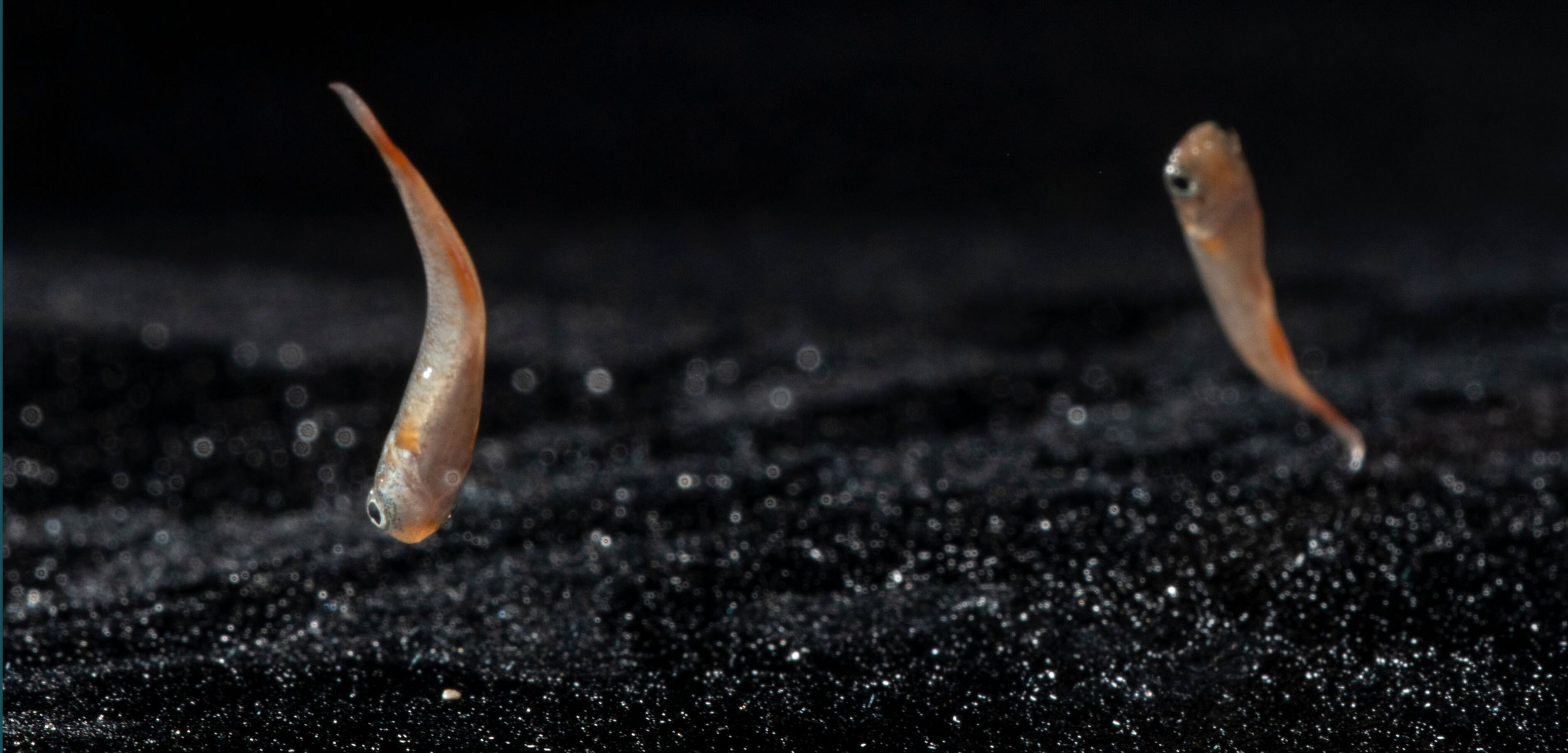The Secret to Making a Fish Swole
Fish on an exercise regimen go faster, higher, stronger.
Article body copy
The mangrove rivulus, a small killifish partial to the swamps of Florida, Venezuela, and the Caribbean, has long been known among ichthyologists as an accomplished jumper, able to leap through the air over a distance many times its body length. The fish is such a determined jumper that nothing can hold it—not even water.
“They leave the water for a number of reasons,” explains Giulia Rossi, a doctoral candidate at the University of Guelph in Ontario. They’ll jump to hunt insects, and they’ll jump to flee seasonal droughts. If the water in the swamp becomes unacceptably harsh because of an unexpected rise in hydrogen sulfide levels or a drop in oxygen content, the fish will hop its way to a new environment. The mangrove rivulus can breathe air through its skin and will safely spend as many as 66 days hopping around on land.
Unlike most fish, which tend to flail helplessly whenever they find themselves out of the water, mangrove rivulus seem to jump with purpose. Some of their destinations are somewhat surprising. D. Scott Taylor, a retired biologist from the Environmentally Endangered Lands Program in Brevard County, Florida, and an expert on the mangrove rivulus, recalls occasionally seeing hundreds of the fish living in a large, rotting log. “They [came] flipping and bobbing out like popcorn,” says Taylor, who swore so much out of surprise during one of these filmed encounters that the audio had to be deleted before he could share it with more “discrete scientific circles.”
And according to new research conducted by Rossi and her colleagues, the longer the fish spends jumping from place to place, the more fit for life on land it becomes.
Fish, just like people, can improve their fitness through exercise. However, this has only ever been proved in the water, even though a number of species leave the water to hunt, to avoid predators, or for other reasons. The mangrove rivulus’s habit of living in logs and crab burrows, plus the considerable distances it travels over land, made it a perfect candidate to bridge that gap in scientific understanding. “We thought this study was really exciting because it was the first time that fish had actually been exercised in a terrestrial environment,” explains Rossi.
To determine the effects of repeated jumping on the mangrove rivulus’s physiology, Will McFarlane, one of Rossi’s students, put the fish on an exercise regimen. He gently prodded a number of them to jump on moist filter paper in a terrarium until they were exhausted. Then, every other day for two weeks, McFarlane made the mangrove rivulus jump for half as long. On the last day of the experiment he made them jump to exhaustion again before comparing their performance against a control group—fish which were also exposed to air but were not induced to jump. The difference in muscle performance between the two groups by the end of the experiment was dramatic.
Mangrove rivulus are capable of spending long periods of time living on land. Video by Kerri Martin
“What we saw is that exercise training significantly improved the terrestrial locomotive performance of the mangrove rivulus,” says Rossi. The fish that had been made to work out were capable of jumping 41 percent farther overall than when they started, and 48 percent more times than the control group. The team reasoned that these more athletic fish were benefiting from increased red muscle hypertrophy—a direct consequence of their new exercise regimen.
“This study adds some intriguing knowledge to a little-known aspect of mangrove rivulus’s terrestrial behavior in the field,” says Taylor. “We can’t really appreciate the difficulty of a small fish navigating across the complex floor of an unflooded mangrove swamp.” What’s more, this new research could have profound implications for genetic studies of the mangrove rivulus, which is one of only two vertebrate species capable of self-fertilization. “Are certain clones more physically fit than others, or at least capable of enhanced fitness via training?” asks Taylor.
The experiment has also generated new hypotheses within the team about the individual advantages of other amphibious fish that spend a good amount of time in terrestrial environments.
“We think that if they spend a lot of time out on land they become better terrestrial athletes, which will make them more successful out of water,” says Rossi. These traits would inevitably be passed down to their descendants.
“I think, with study, we can gain some insight, or at least generate some hypotheses, about the evolution of terrestriality in other amphibious species and even, maybe, the transition from the first ancestral fish to the first land-dwelling tetrapods,” says Rossi.

